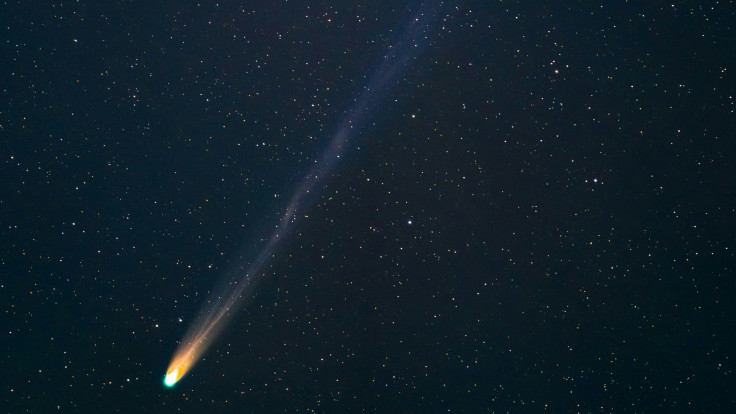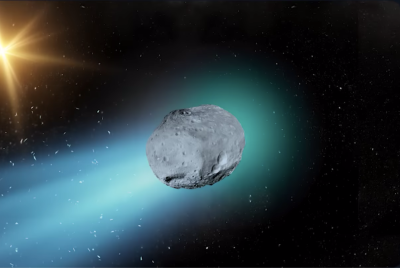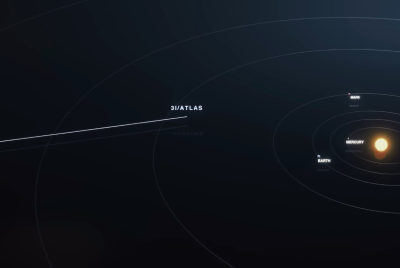NASA Analysis of 3I/ATLAS Object Reveals Anomalies That Puzzle Experts
NASA finds 3I/ATLAS's strange patterns, mass, and chemistry puzzling experts.

A groundbreaking forensic review by NASA has revealed puzzling thermal anomalies in 3I/ATLAS that challenge scientists' understanding of this interstellar visitor.
Strange Thermal Patterns Baffle Researchers
In a recent in-depth analysis, forensic scientists have identified highly organised concentric thermal layers around 3I/ATLAS, a feature that, according to the USA Herald review, is 'profoundly abnormal' for a comet.
Instead of the expected chaotic heat dispersal from outgassing, the object appears to have 'precisely stacked rings of energy...each forming near‑perfect circles.'
Surrounding these rings, the study noted a 'thin suppression band' in the thermal imagery, a gradient that no natural comet model would predict.
Researchers suggest that this pattern could indicate an unusual internal structure or possibly a previously unobserved natural phenomenon.
Origins Under Scrutiny: Mass and Acceleration Anomalies
This new forensic imagery compounds earlier oddities. According to a detailed breakdown of 3I/ATLAS's behaviour, the object shows very little non‑gravitational acceleration (the 'rocket effect' typically caused by outgassing), despite clear evidence of volatile material being emitted.
Observers at 3I‑ATLAS.net note that this combination is highly unusual for known interstellar objects and challenges existing models of comet dynamics.
Some astronomers, notably Avi Loeb of Harvard, argue that the minimal acceleration, combined with strong outgassing, implies an exceptionally large mass—estimates suggest around 33 billion tonnes, far more than earlier interstellar visitors.
If accurate, this mass would make 3I/ATLAS the heaviest interstellar object ever recorded, intensifying the mystery around its true nature.
Unusual Chemistry: A Comet Unlike Any Other
Spectroscopic observations add another layer of intrigue. Data from the James Webb Space Telescope (JWST) reveal a coma dominated by carbon dioxide, with only trace amounts of water — a highly unusual mixing ratio.
This composition diverges sharply from the expected volatile mix of typical comets, suggesting that 3I/ATLAS may have formed under conditions very different from those in our Solar System.
Meanwhile, earlier ultraviolet observations confirmed active water outgassing, resulting in OH emissions, even while 3I/ATLAS remains far from the Sun.
Analyses by the SPHEREx mission also detected strong water‑ice absorption alongside a CO₂-rich coma, reinforcing the idea of an exotic and unfamiliar chemical composition.
Experts warn that understanding this chemical makeup is crucial, as it may reveal the processes that govern the formation of interstellar objects and provide insights into materials from beyond our Solar System.
Questions About NASA's Transparency
The forensic report also highlights growing frustration among observers: despite claims of HiRISE imaging by the Mars Reconnaissance Orbiter, high-resolution NASA images have not been publicly released.
Critics argue that the delay fuels suspicion. Without clearer imagery, the object's true structure remains ambiguous, and some unverified interpretations suggest the thermal patterns could hint at an artificial or non-standard origin.
Why It Matters to Humanity
If 3I/ATLAS is genuinely behaving unlike any comet we've seen—with ordered thermal rings, anomalous mass, and a bizarre chemical makeup—it could force a major rethink of how interstellar objects form.
Such findings are not just academic. They carry weight for understanding the building blocks of other star systems, the behaviour of interstellar travellers, and even the remote possibility that some objects may not be purely natural.
Scientists emphasise that studying 3I/ATLAS in detail could help prepare humanity for future encounters with interstellar phenomena.
The Road Ahead: Close Watching Continues
Astronomers are now calling for the rapid and transparent release of all remaining data on 3I/ATLAS. As the object reemerges from behind the Sun, telescopes across Earth and space will be trained on it.
Only with more detailed observations can scientists test whether these anomalies are a quirk of nature... or signs of something far more extraordinary.
For now, 3I/ATLAS remains one of the most enigmatic objects ever observed, and the world watches as researchers continue their meticulous analysis.
© Copyright IBTimes 2025. All rights reserved.





















